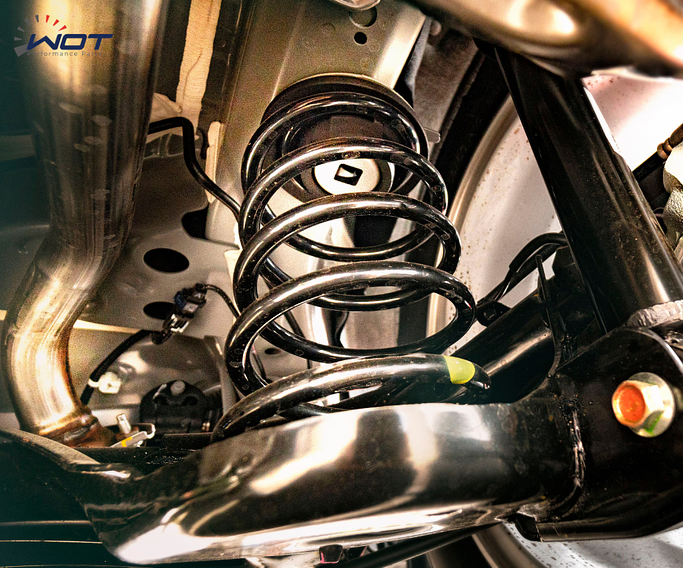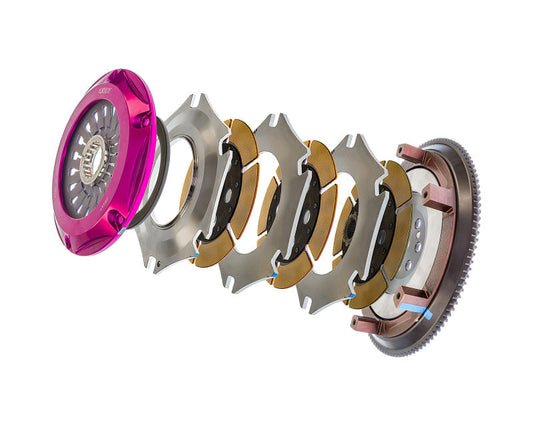When it comes to enhancing your car's performance, upgrading the suspension system is a game-changer. Whether you're a car enthusiast looking to improve handling or a performance driver aiming for the ultimate driving experience, a high-quality suspension system is essential. In this comprehensive guide, we’ll walk you through the basics of upgrading your car’s suspension system. Contact WOT Performance Parts today for more information.
Importance Of A High-Quality Suspension System
A high-quality suspension system is crucial for several reasons:
- Improved Handling: A robust suspension system enhances your car's handling, allowing for better control during corners and turns.
- Increased Comfort: A good suspension absorbs road shocks and vibrations, providing a smoother ride.
- Enhanced Safety: Proper suspension systems ensure that your tires maintain contact with the road, improving braking and overall vehicle stability.
Signs Your Car’s Suspension Needs An Upgrade

Knowing when to upgrade your suspension is key to maintaining optimal performance. Here are some signs that your car's suspension may need an upgrade:
- Uneven Tire Wear: Indicates poor alignment or worn-out suspension components.
- Excessive Bouncing: If your car bounces excessively after hitting a bump, it’s a sign that your shocks or struts are worn out.
- Nose Dives When Braking: If the front of your car dips when you apply the brakes, it’s time to check your suspension system.
- Poor Ride Quality: A rough, uncomfortable ride suggests that your suspension system is not functioning as it should.
Different Types Of Suspension Systems
When considering an upgrade, it's important to know the different types of suspension systems available:
- Coilovers: These combine a shock absorber and a coil spring into a single unit. They are adjustable and provide excellent handling and performance.
- Air Suspension: Uses air springs instead of traditional metal springs. This type is adjustable for different driving conditions and offers superior comfort.
- Leaf Springs: Commonly used in trucks, leaf springs provide strong support but can be less comfortable than other options.
- Strut-Based Suspension: Often used in modern cars, strut-based systems are compact and provide a balance between comfort and performance.
Factors To Consider Before Upgrading
Before you upgrade your car suspension, consider the following factors:
- Budget: Determine how much you are willing to spend. High-quality suspension systems can be expensive but are worth the investment.
- Goals: Identify what you aim to achieve with the upgrade—better handling, improved comfort, or enhanced off-road capability.
- Driving Conditions: Consider the primary conditions in which you drive. Different terrains and driving styles require different suspension setups.
Step-by-Step Guide To Upgrading Your Suspension System
Upgrading your suspension can seem daunting, but these steps will help guide you through the process:
- Research: Gather information on different suspension types and brands.
- Set a Budget: Decide on your budget for the upgrade.
- Selection: Choose the right suspension system based on your goals and driving conditions.
- Purchase: Buy the suspension components from a reputable supplier.
- Installation: Either install the system yourself if you have the expertise or hire a professional.
- Alignment: Ensure your wheels are properly aligned after the installation.
- Test Drive: Take your car for a test drive to check the new suspension.
Benefits Of Upgrading Your Suspension

Here are the benefits you'll enjoy by upgrading your car suspension:
Enhanced Handling: Better control and stability, especially at high speeds or during sharp turns.
- Improved Ride Comfort: Less bumpy rides with superior shock absorption.
- Increased Safety: Better road contact and braking performance, leading to safer driving conditions.
- Customization: Adjust your suspension settings to match your driving style and conditions.
Common Mistakes To Avoid When Upgrading
Avoid these common mistakes to ensure a successful suspension upgrade:
- Skipping Research: Not understanding the types of suspension systems available can lead to poor choices.
- Ignoring Professional Advice: Always seek advice from professionals or experienced car enthusiasts.
- Cheap Components: Don’t compromise on quality to save money. Low-quality parts can fail quickly and result in additional expenses.
Test Driving And Adjusting Your New Suspension
Once your new suspension is installed, take your car for a test drive:
- Evaluate Handling: Check how the car handles corners and different road conditions.
- Adjust Settings: Many suspension systems offer adjustable settings. Fine-tune them for optimal performance and comfort.
- Monitor Performance: Keep an eye on how your car performs over time and make adjustments as needed.
Maintenance Tips For Your Upgraded Suspension
Maintaining your upgraded suspension is crucial for longevity and performance:
- Regular Inspections: Regularly check your suspension components for wear and tear.
- Clean Components: Keep the suspension system clean to prevent rust and corrosion.
- Proper Alignment: Ensure your wheels are aligned correctly to avoid uneven tire wear.
A high-quality suspension system not only enhances your car's performance but also ensures a safer and more comfortable ride. If you're considering an upgrade, now is the perfect time to invest in your car’s future.
At WOT Performance Parts, we are here to help you through every step of the process. With over 30 years of experience, our team of automotive enthusiasts is dedicated to bringing you the best products and customer support. Ready to upgrade? Contact us today or visit our website to explore our extensive range of suspension systems.






